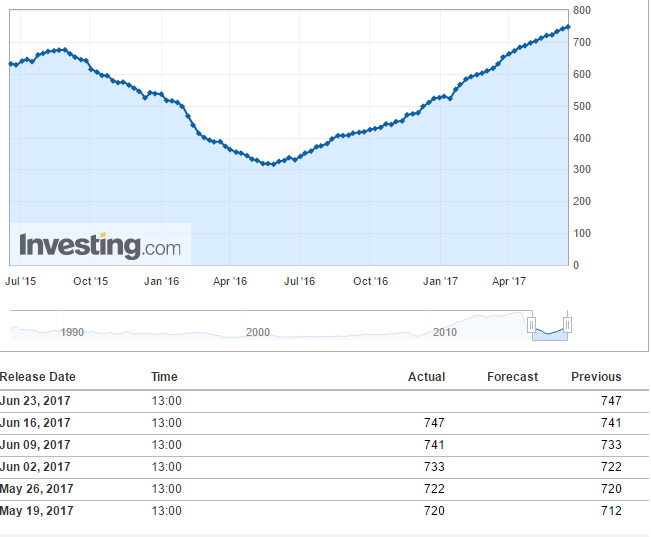Oil market overview
Brent oil futures have extended their decline below $46 per barrel – a nine-month low as rising supply offsets efforts by OPEC and other major oil producing countries to drain a glut.
Recovering production from Libya and Nigeria which are exempt from the output cut deal due to losses caused by their domestic unrests – adds to oil supplies and make OPEC delegates to question whether their efforts are enough for oil glut reduction.
Growing production from the US raises some additional concerns over OPEC’s ability to reduce the oil output. Baker Hughes Inc. reported last week that American drillers have added 6 rigs to the previous count of 741. The number of rigs was rising in last 22 weeks. It is the longest run in 30 years.

The American Petroleum Institute published an updated data on the US crude inventories yesterday. According to the API estimates, the US stockpiles dropped by 2.72 million barrels in the past week. The drag factor is that gasoline supplies continued to rise as American refineries increased their production capacities. In today’s spotlight will be the official data on the US stockpiles. If it confirms the data from private source released yesterday, the oil prices might get some modest support.
In the long-term, many analysts predict a further decline in oil prices. The Bank of Russian in its latest monetary policy reports presented an extremely sobering outlook on oil. The bank’s officials believe that with an economic slowdown in China and general ebbing demand for energy, the oil prices could slump to $25 per barrel by mid-2018.
Some other thinktanks believe that countries’ efforts to comply with Paris climate accord may become an additional headwind for oil crude futures. Such oil giants as Exxon Mobil and Royal Dutch Shell risk to lose significant parts of their revenues, once the international climate targets are met. More than $2 trillion of planned investments in the oil and gas fields by 2025 may become redundant if governments increase their efforts to lower carbon emissions and limit global warming to 2°C (the information is retrieved from the Carbon Tracker thinktank and a group of institutional investors). The money spent on the extension of Kashagan (dubbed as “cash all gone”) in Kazakhstan as well as on the Bonga Southwest and Bonga North in Nigeria will unlikely bring expected revenue in case of the realization of the 2-degree scenario.
In the following article, we gave just a short sketch of the oil fundamentals. Most of them are headwinds for oil prices. In the short term, however, the oil prices may partially recover their losses (if incoming economic data is positive). Extreme spikes and a clear return to the levels above $50 are unlikely though. Increased compliance with the OPEC deal should offer only modest support to oil prices.